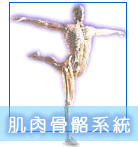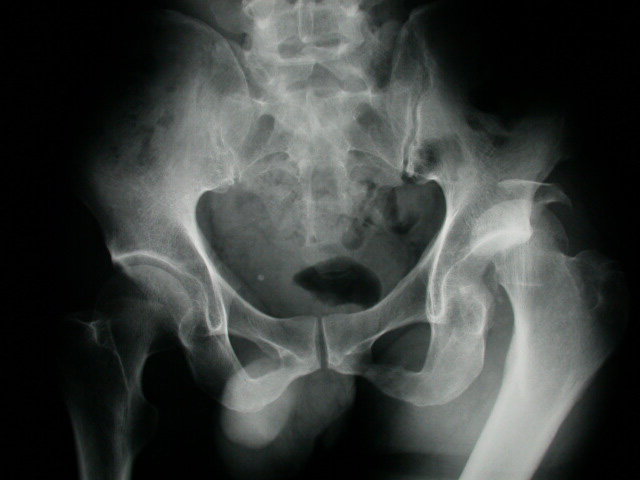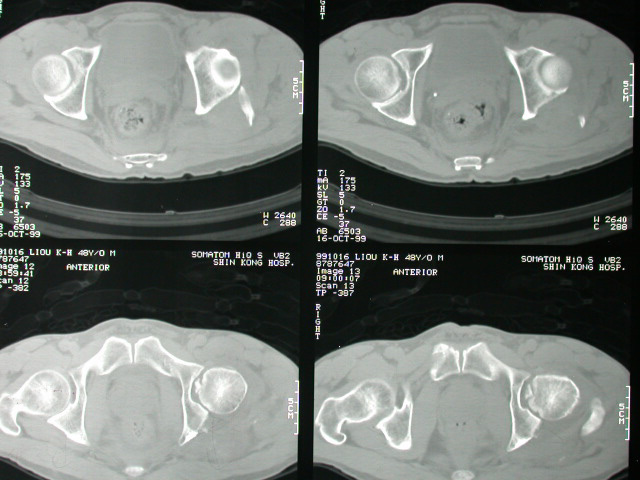History:
A 48 y/o male was injuried by a heavy falling object (a large piece
of glass) over the left hip
Questions:
1. What are the findings?
2. What is the differential diagnosis?
3. What is the diagnosis?
Answers:
1. Anteroposterior (AP) radiograph of the pelvis shows superior
and lateral dislocation of the left femoral head. Disruption of
the line of the posterior acetabular wall is evident. A large displaced
bone fragment is superior to the left femoral head. CT of the pelvis
(bone window) without contrast after close reduction of the left
hip shows accetabular fracture (posterior column) and humeral head
fracture. The displaced posterior column of the left acetabulum
is located far lateral to the humeral head.
2. Anterior hip dislocation, posterior hip dislocation
3. Posterior hip dislocation with acetabular (posterior wall) and
humeral head fracture
Discussion
Hip dislocations result from severe trauma such as motor vehicle
accidents. Posterior dislocation with or without acetabular fracture
account for 85% to 90% of traumatic hip dislocation. The mechanism
of injury is a blow along the axis of the femoral shaft with the
hip flexed (as in hitting the dashboard with the knee in a motor
vehicle accident). The posterior wall or column of the acetabulum
often is fractured, and the femoral shaft or knee also may be injuried.
Associated fractures of the femoral head occur occasionally, and
intraarticular fragments may be particularly problematic for reduction.
The thigh is characteristically adducted after a posterior dislocation.
CT can identify intraarticular fragments and confirm relocation
of the hip after reduction. The presence of gas bubbles in the hip
joint capsule after trauma, in the absence of penetrating injury,
is a reliable indicator of recent hip dislocation. Most bubbles
are located anterior to the femoral neck, but bubbles also may be
found posteriorly. If hip dislocation is unsuspected because of
spontaneous relocation or reduction at the scene, the presence of
gas should alert the clinician to the possibility of complications.
Complications of hip dislocation include avascular necrosis of the
femoral head, transient or permanent sciatic nerve palsy, myositis
ossificans, and posttraumatic degenerative arthrosis. A posterior
hip dislocation strecches and twists the external iliac, common
femoral, and circumflex arteries, resulting in changes in extraosseous
blood flow. Although collateral circulation from gluteal vessesls
may preserve intraosseous blood flow, delayed relocation may produce
a progressive and delayed form of arterial damage that leads to
osteonecrosis.
Reference
1. K. J. Fairbairn, M. E. Mulligan, M. D. Murphey, C. S. Resnik.
Gas bubbles in the hip joint on CT: an indication of recent dislocation.
AJR 1995; 164: 931-934 |



